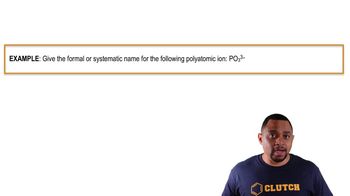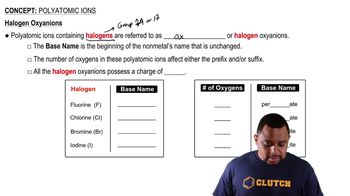Here are the essential concepts you must grasp in order to answer the question correctly.
Ionic Charge
Ionic charge refers to the electrical charge that an ion carries, which is determined by the loss or gain of electrons. In the case of P³⁻, the negative charge indicates that the phosphorus atom has gained three electrons, resulting in a total of five electrons in its outer shell, which is crucial for understanding its reactivity and bonding behavior.
Recommended video:
Phosphide Ion
The P³⁻ ion is known as the phosphide ion. It is formed when phosphorus gains three electrons, leading to a stable electron configuration. Phosphide ions are typically found in ionic compounds, where they bond with metals, and they play a significant role in various chemical reactions and materials.
Recommended video:
Polyatomic Ions Example 1
Naming Ions
Naming ions involves using specific conventions based on their charge and the element they represent. For anions like P³⁻, the name is derived from the element's name with the suffix '-ide' added, resulting in 'phosphide.' This systematic approach helps in identifying and categorizing ions in chemical formulas and reactions.
Recommended video:
 Verified step by step guidance
Verified step by step guidance Verified video answer for a similar problem:
Verified video answer for a similar problem:



 1:42m
1:42m